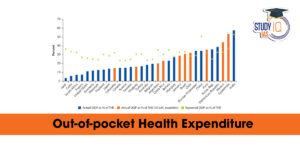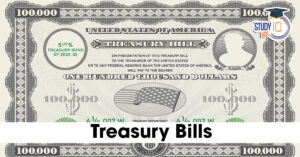Table of Contents
Context: Wrist watches, handbags, antiques, paintings, sculptures, sunglasses, home theatre systems, shoes, and sportswear priced over Rs 10 lakh will now face a Tax Collected at Source (TCS) levy of 1 per cent at the point of sale.
Tax Collected at Source (TCS) Latest Update
Under Section 206C(1F) of the Income Tax Act 1961, the following articles will be included. Hence, bringing TCS @ 1% in case the value of the said goods is over Rs. 10 lakhs.
| Sl No. | Types of Goods |
| 1 | Wrist Watch |
| 2 | Art pieces like antiques, paintings and sculptures |
| 3 | Collectables such as coins and stamps |
| 4 | Yacht, rowing boats, canoe, and helicopter |
| 5 | Pair of sunglasses |
| 6 | Handbags and Purses |
| 7 | A pair of shoes |
| 8 | Sportswear and equipment |
| 9 | Home theatre system |
| 10 | Horse for racing and polo games |
Tax Collected at Source (TCS)
Tax Collected at Source (TCS) is a scheme under the Income Tax Act, 1961, where tax is to be collected by the seller of certain specified goods or services from the buyer at the time of sale, and this so-collected tax is paid to the government by the seller.
| About Tax Collected at Source (TCS) | |
| Who collects? | The seller |
| From whom? | The buyer |
| When? | At the time of sale |
| On what? | Specified Goods and Services (such as alcohol, timber, minerals, scrap, motor vehicles of a value above a specified amount, and specific financial transactions such as foreign remittances and overseas tour packages) |
| Why? | To collect tax at the source of the transaction |
TCS rates are changeable and are defined by the Income Tax Department. Recent amendments from April 1, 2025, have made some TCS rates and applicability different, especially for foreign remittances and selling goods.
Also Read: New Income Tax Bill 2025
TCS Calculation
TCS is generally computed on the total invoice amount, which can include GST. For certain goods and services (such as motor vehicles of over ₹10 lakh or foreign remittances over specified limits), TCS is only above a certain level.
TCS differentiates highly by the nature of goods or services. For instance, it’s 1% for selling automobiles over ₹10 lakh, whereas it could be 5% or even 20% in the case of some foreign remittances beyond certain thresholds (as of April 1, 2025).
TCS Amount = (Value of Sale / Amount Received) x TCS Rate
Example
If you buy a car for ₹12 lakh (sale consideration) and the TCS rate for motor vehicles exceeding ₹10 lakh is 1%, the TCS amount will be:
₹12,00,000 x 1/100 = ₹12,000
So, you would pay ₹12,12,000 to the seller (₹12,00,000 for the car + ₹12,000 as TCS). The seller will then deposit the ₹12,000 as TCS with the government.
TCS Rates for Specific Goods
| Type of Goods or Transactions | Rate |
| Liquor of an alcoholic nature, made for consumption by humans | 1% |
| Timber wood obtained under a forest lease | 2.5% |
| Tendu leaves | 5% |
| Timber wood by any mode other than forest-leased | 2.5% |
| Forest produce other than Tendu leaves and timber | 2.5% |
| Scrap | 1% |
| Minerals being lignite, coal and iron ore | 1% |
| Purchase of a Motor vehicle exceeding Rs 10 lakh | 1% |
| Parking lot, Toll Plaza and Mining and Quarrying | 2% |
What is the Difference between TCS and TDS?
| Aspect | TDS (Tax Deducted at Source) | TCS (Tax Collected at Source) |
| Meaning | Tax is deducted by the payer from the payment made to the payee. | Tax collected by the seller from the buyer during the sale of goods/services. |
| Who deducts/collects | Payer of income (e.g., employer, company, etc.) | Seller of goods/services |
| When it is applicable | When making specified payments like salary, interest, rent, commission, etc. | When selling specified goods like scrap, minerals, timber, or collecting payments for remittances. |
| Nature of transaction | Applies mostly to services and financial transactions. | Applies mostly to the sale of specified goods or services. |
| Paid on behalf of | Deducted on behalf of the payee (recipient). | Collected on behalf of the buyer (payer). |
| Scope | Wider – covers salaries, interest, rent, commission, dividends, etc. | Narrower – applies to specific goods/services like minerals, scrap, e-commerce, remittances. |
| Purpose | To ensure advanced collection of tax by the government. | To track and collect tax at the point of sale. |
| Relevant Section of IT Act | Covered under Sections 192 to 196. | Covered under Section 206C. |
| Rates (examples) | Salary: 10–30%, Rent: 10%, Interest: 10%, Commission: 5% | Timber: 1%, Scrap: 0.1%, Foreign remittances: 5% |
| Example | An employer deducts TDS from an employee’s salary before payment. | A seller of scrap collects TCS at 0.1% from the buyer while selling the scrap. |


 Out-of-Pocket Health Expenditure, Reason...
Out-of-Pocket Health Expenditure, Reason...
 Treasury Bills (T-bills): RBI Cuts Holdi...
Treasury Bills (T-bills): RBI Cuts Holdi...
 Fisheries Sector in India, Current Statu...
Fisheries Sector in India, Current Statu...

























